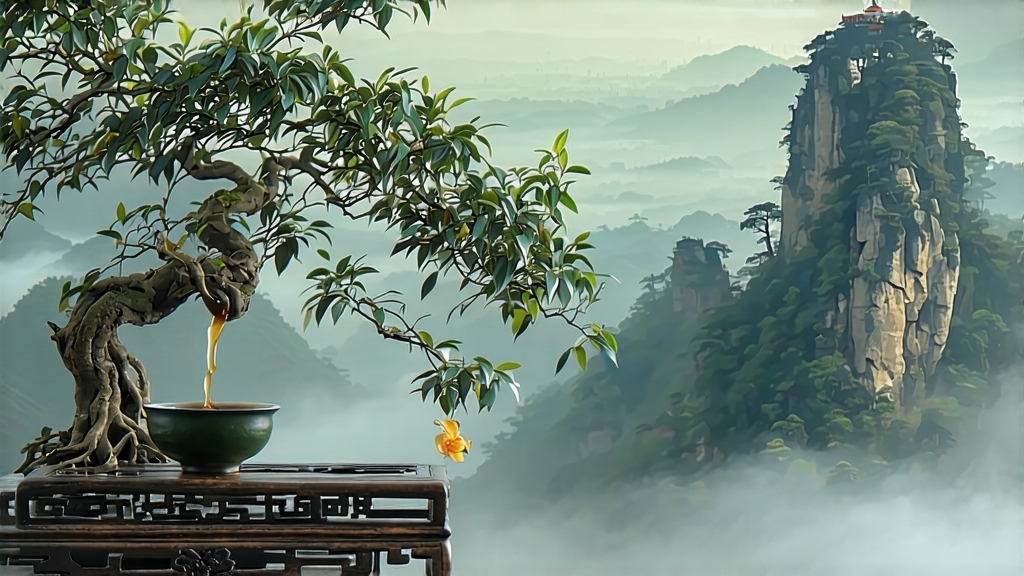
If oolong tea is the vast, nuanced continent that bridges green freshness and black depth, then Phoenix Dancong stands on its southernmost promontory, singing in a dialect of flowers, fruits, and mountain mist no other tea can imitate. Hailing from the vertiginous granite peaks of Fenghuang (Phoenix) Mountain in Guangdong Province, this storied cultivar has been seducing emperors, scholars, and now global tea lovers for almost a millennium. To understand Dancong—literally “single bush”—is to listen to a living archive of Chinese horticulture, Taoist gardening philosophy, and charcoal alchemy, all contained within a single glossy, twisted leaf.
1. Historical roots: from Song dynasty tribute to modern connoisseurship
Local chronicles credit the Song imperial court with first recognizing the extraordinary fragrance of tea trees growing wild at 600–1,200 m on Wudong, the highest ridge of Fenghuang. Farmers began isolating individual trees whose leaves naturally evoked the scent of gardenia, orange blossom, almond, or ginger flower. By the late Ming, these “archetype” trees were vegetatively propagated by air-layering, giving rise to what botanists today call “Dancong” clonal groups. Because each clone retains the aromatic signature of its mother tree, the mountain effectively became an open-air library of flavor, with every village guarding cuttings of its most perfumed bushes. During the Qing, Dancong traveled the maritime tea routes to Southeast Asia, where Cantonese migrants paid premium prices for “Phoenix perfume tea,” cementing its reputation as the most aromatic of all Chinese oolongs.
2. Micro-terroir: why altitude equals aroma
Fenghuang Mountain is a 1,498 m granite monolith laced with mineral-rich ravines. Day-night temperature differentials of 10 °C slow leaf growth, concentrating aromatic precursors, while constant cloud cover filters UV light, boosting monoterpene alcohols responsible for floral notes. The soil is a coarse, well-drained lateritic loam with a pH of 4.8–5.2—ideal for forming the theanine that sweetens the cup. Most critically, century-old bushes have sunk taproots more than three meters deep, mining potassium and micro-elements that translate into a shimmering, stone-fruit minerality on the palate.
3. The clonal mosaic: understanding “fragrance types”
Unlike rock oolongs from Wuyi that are defined by processing style, Dancong is classified first by aroma. There are over 80 documented “xiang” (fragrance) types, but exporters usually focus on ten classics:
- Huangzhi Xiang (orange blossom)
- Milan Xiang (honey orchid)
- Xingren Xiang (almond)
- Yulan Xiang (magnolia)
- Zhilan Xiang (gardenia)
- Jianghua Xiang (ginger flower)
- Youhua Xiang (pomelo flower)
- Rose Dancong
- Cinnamon Dancong
- Snowflake Dancong
Each type originates from a single, ancient tree; cuttings taken from that tree bear the same name and aroma, creating a living pedigree analogous to heirloom grapes in viticulture.
4. Harvest calendar: one mountain, four seasons
Dancong is picked year-round, but quality peaks in spring (late March to mid-April) and autumn (early October). Spring tea offers high, bright florals and a silky body; autumn tea is deeper, with riper fruit and a cooling menthol finish. Winter “snow flakes,” picked in December, are increasingly fashionable among boutique buyers for their crystalline sweetness. Summer harvests are usually diverted to charcoal roasting experiments or scented tea bases.
5. Crafting the fragrance: an eight-act play
Act I – Plucking: only the middle three leaves plus a bud are taken, when the petiole snaps with an audible “tick,” indicating optimum turgor.
Act II – Sun-withering: leaves are spread on bamboo screens under late-afternoon sun for 20–40 min, depending on cloud thickness, to reduce moisture to 65 %.
Act III – Rack-withering: trays move indoors for 6–8 h of gentle oxidation; artisans shake the racks every hour to bruise